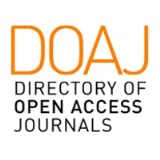The place of memory. The place of the other. Viewpoint as an articulating axis of experience. A didactic proposal
DOI:
https://doi.org/10.58265/pulso.4903Abstract
This text aims to present a didactic approach in the field of visual arts that uses critical pedagogy to provide tools for reading and production. The objective is to prompt students to put themselves in others' shoes, to acknowledge themselves beyond their own image, to be taken aback by their own assumptions, to comprehend the image, and ultimately, to introspect and reject social stereotypes that classify, discriminate, and isolate.
Downloads
References
APARICI, R. (1993) La revolución de los medios audiovisuales. Madrid, Martínez Roca.
ARNHEIM. R. (1979) Arte y percepción visual. Alianza, Madrid.
BÁRCENA, F. Y MÉLICH, C. (2000) La educación como acontecimiento ético. Barcelona, Paidós.
CARY, R. (1998) Critical Art Pedagogy. New York and London, Garland Publishing.
FERNÁNDEZ VALENCIA, A. (2001) Las mujeres en las ciencias sociales. Madrid, Síntesis.
FRUTIGER, Adrian (1991) Signs and Symbols. Their Desing and Meaning. Studio
HABERMAS, J. (1988) Teoría de la acción comunicativa. I y II. Taurus, Madrid.
ISHERWOOD, S. y STANLEY, N. (1994) Creating Vision. Manchester, Cornerhouse Publications.
LEVY, P. (2001) Si esto es un hombre. Madrid, Muchnik.
McLAREN, P. (1997) Pedagogía crítica y cultura depredadora. Barcelona, Paidós.
PROSS, H. (1983) La violencia de los símbolos sociales. Madrid, Edhasa.
SCHAVERIEN(1992) The Revealing image: analytical art psychotherapy in theory and Practice. London, Routledge.
THEWELEITH, K. (1977) Männer fantasien. Frankfurt, Roter Stern Verlag.
Downloads
Published
How to Cite
Issue
Section
License
Copyright (c) 2022 Pulso. Revista de educación

This work is licensed under a Creative Commons Attribution-NonCommercial-NoDerivatives 3.0 Unported License.
This journal offers immediate open access to its content based on the idea that offering readers free access to research favours a global exchange of knowledge.
Papers are published in the electronic version of the journal under a Creative Commons License: Attribution-NonCommercial-No derivatives 4.0 International
Authors are allowed and encouraged to promote the post-print version (reviewed and accepted for publication version) of their work online before publishing them. This favours their earlier circulation and dissemination and thus a possible increase in their citation and reach among the academic community.













